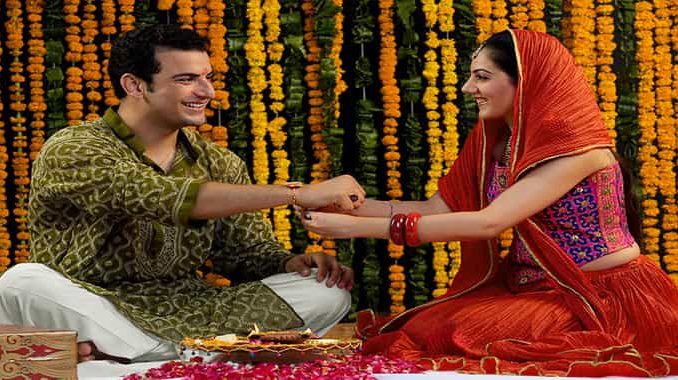
On the full moon day of the month of Shravan, a festival is celebrated in which the mutual love of brothers and sisters of the whole country is seen – Raksha Bandhan.
The tradition of this festival reflecting the love and affection of brothers and sisters is celebrated in almost every religion today. This festival is a symbol of brother and sister’s love beyond religion.
Rakshabandhan festival
Trust is the foundation of any relationship. And this is the trust a sister puts on her brother when she ties a thread called Rakhi on the brother’s wrist on this festival. With a Rakhi tied in his hand, the brother vows that he will always protect his sister no matter how strange the situation is. The thread of Rakhi not only protects but also connects hearts with love and loyalty.
The importance of this day is so much that even if a sister cannot meet her brother on this day, he still sends a rakhi to them by post. There are many stories related to Raksha Bandhan, in which not only is the sister tying the rakhi, but also the wife or Brahmin. Because this sutra, this thread is a rakshaasutra.
Mythology
According to mythology, there was a long-running war between the Devas and Asuras. Devas were constantly being defeated in this war, and saddened by this, Devraj Indra went to his Guru Brihaspati for consultation. Indrani’s wife was also there. Hearing Indra’s agony, Indrani told her that she will prepare a Raksasutra lawfully in Shukla Poornima of Shravan. Indrani asked Indra to bind the Rakshasutra Brahmins and said that he would definitely win. And indeed the gods won by doing so. Since then, this practice of tying Rakshasutra by Brahmins is prevalent.
According to a legend, the wife of Alexander the Great Alexander had tied a thread on the wrist of Alexander’s enemy Pururaja to protect her husband in the war. And this happened, during the war, many occasions came when Pururaj wanted to kill Alexander with a fatal blow, but seeing the rakhi tied on his wrist, Pururaj gave life to Alexander.
In the Mahabharata period, when Shri Krishna killed Shishupala with his Sudarshan Chakra, his finger was cut at that time. Seeing the blood flowing from Shri Krishna’s finger, Draupadi tore her sari and tied it on her finger. A piece of sari was no less than a Raksha sutra, so Shri Krishna promised Draupadi to always protect her. And when further misrule was tearing down Draupadi in a packed assembly and the Pandavas and all the others were unable to help them, then Shri Krishna took a shameful rakhi of Draupadi and fulfilled his promise.
Another interesting story is described in the Puranas. At one time Lord Vishnu left the Baikund to fulfill his promise given to King Bali and went to the kingdom of sacrifice and started protecting the kingdom of sacrifice. Goddess Lakshmi tied a rakhi on the wrist of King Bali in the form of a Brahmani to bring God back and wished for her. King Bali also considered Brahmin queen Maa Lakshmi as her sister and pledged to protect her. Then Mother Lakshmi came in her true form and begged Raja Bali to release Shri Vishnu from his word and let him return to Baikund again. King Bali sacrificed his promise to his sister and freed the Lord from his promise.
Raksha Bandhan is the time of the most auspicious time to tie Rakhi. If the midday Muhurta is not available due to any astrologer reasons, then Pradosh Muhurta is also considered auspicious for the ritual. Bhadra time is considered inauspicious for any auspicious work, so do not perform rituals at this time.
